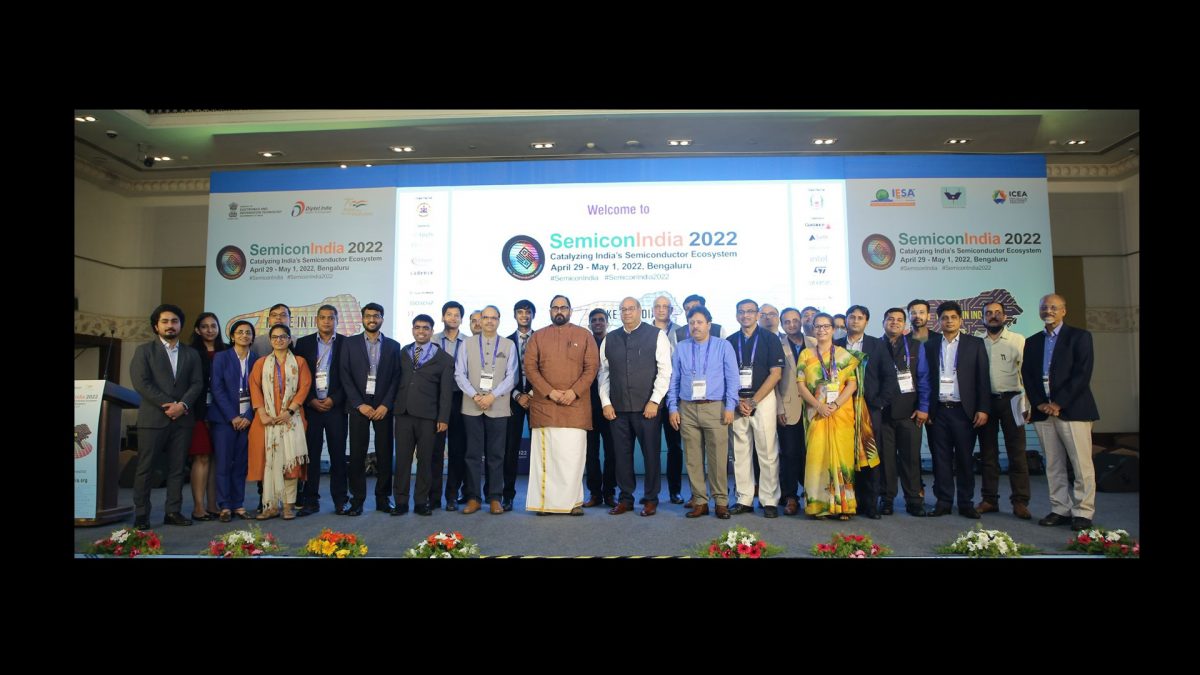The Prime Minister of India, Narendra Modi inaugurated the global semiconductor conclave SemiconIndia Conference 2022. The conference is designed to bring together key stakeholders to showcase existing capabilities, ideate innovations and discuss global best practices. The flagship conclave with the theme ‘Catalysing India’s Semiconductor Ecosystem’ is being held in Bengaluru from 29th April to 1st May 2022.
Inaugurating the conference Modi said, “Semiconductors today are playing a critical role in the world. India is in a unique position to be an influential player in the segment owing to its consumer base and skilled engineering workforce. Our government is cognizant of the potential of the sector, and we are committed to the acceleration and growth of the chip design and manufacturing ecosystem in the country; an ecosystem that is built on the principle of Hi-tech, high quality and high reliability.”
He further said, “Our digital-first approach can be seen in the way India has adopted digitalisation. Today, UPI is the most efficient payment infrastructure. We are using digital technologies to transform lives in all forms of governance from health and welfare to inclusion and empowerment. This conference is a step towards bringing the industry and government closer to ideate, discuss and formulate policies that will enable growth and pave way for India to be at the forefront of next revolution in technology.”
He continued, “ We commit to providing support in form of ease of business, empowering policies, monetary support in form of PLI and other schemes, and investing in skilling and training youth to provide talent required for the sector in India and globally.”
“We have earmarked USD 10 billion for India Semiconductor Mission and are creating an environment that encourages growth to create a vibrant semiconductor ecosystem and steer India into the future,” he added.
The conference aligns with the larger national narratives such as Make in India and Atmanirbhar Bharat and is pegged as the launchpad to India Semiconductor Mission (ISM). The brightest minds in the sector have come together to help actualise India’s aspirations of becoming a superpower in the semiconductor sector. The three-day conclave is designed to provide impetus to India’s semiconductor strategy and chart its future course of action and growth milestones.
Speaking on the occasion, Ashwini Vaishnaw, Minister for Electronics & Information Technology, Railways and Communication said “The biggest asset India has is its talented workforce that is trusted by the world. Building India as a prominent player in chip design and manufacturing is a marathon, not a sprint. Our vision is supported by careful planning and calibrated efforts of all stakeholders to establish India as a major hub for electronic and semiconductor industry globally.”
“Aside from our favourable policies, we are also working closely with academic and global institutions to design a curriculum that will help create 85 thousand trained and production ready workforce for the semiconductor industry. We reiterate our commitment and promise to work closely with the industry in a focused manner for the long-term growth and development of the sector,” he added.
Rajeev Chandrasekhar, Minister of State for Electronics & Information Technology and Skill Development & Entrepreneurship said,” The world has been through one of the worst Black Swan phases in recent times. India has suffered USD 150 billion – USD 200 billion economic loss due to lockdowns in the pandemic. However, we have emerged stronger despite the economic setbacks. Given our vast country and populace, India has shown great resilience and done exceptionally well with its vaccination program, healthcare and financial support and other welfare schemes for its citizens. The key to achieving this monumental feat has been effective governance and empathetic policies.”
He further said, “We also have been cognizant of the rapid pace of digitalisation thrust upon us by pandemic and our ability to face this calamity with resilience has been appreciated by the whole world. Today our technology ecosystem is recognized for its excellence the world over and our startup ecosystem replete with many unicorns is a testimony to this fact.”
He continued, “The semiconductor design and manufacturing sector is a critical component of our next phase of growth and to catalyse this growth, we have laid down a calibrated roadmap ably supported by conducive policies and concerted effort and close collaboration with the industry. Together we can and we will bring to fruition our Hon’ble Prime Minister’s vision of putting India at the forefront of the next Techade by ensuring Sabka Saath, Sabka Prayaas.”
The inaugural event was well represented by the industry with leading Indian and global enterprises present. The industry captains in attendance lauded the government’s efforts and vision in turning the country into a semiconductor hub.
Sanjay Mehrotra, President & CEO, Micron Technology emphasised on the role of semiconductor sector in ensuring an Atmanirbhar Bharat, made possible by the collective efforts of the industry, academia, and the government. In his keynote address Randhir Thakur, President, Intel Foundry Services, reiterated the critical role the domestic semiconductor sector is playing and will continue to play in ensuring economic growth and security.
Semiconductors are the new oil in the digital age. Providing impetus to the homegrown innovators and welcoming global players to set up manufacturing in the country will propel India’s tech sector growth in years to come. Jim Keller, CEO Tentorrent emphasised all-pervasive nature of semiconductors in our everyday lives. With the consumer base and data growing at a rapid pace, there is a need for the semiconductor ecosystem to keep pace. India will play a critical role from talent and technology perspective globally.
During the conference, the government also solidified its partnerships with the industry by showcasing commitment and a keen interest to work with the stakeholders to realise its efforts towards actualising the milestones set and translating its vision into a reality.
